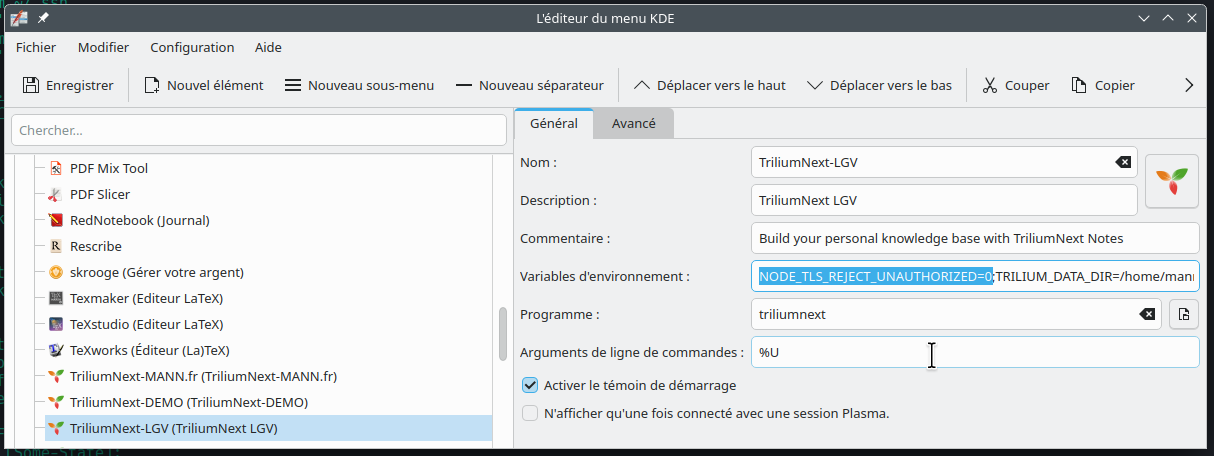¶ TriliumNext Notes
TriliumNext Notes est un inratnet wiki avec un modèle client-serveur.
¶ Usage sans installation
Le système est exploitable directement depuis ses sites webs d'installation. Les chemins /share et /login sont utilisés pour les consultations publiques et les connexions respectivement.
¶ Installation de TriliumNext Notes on Manjaro
Le package est triliumnext-bin
¶ Installations de raccourcis pour des sites différents sous Manjaro KDE
Une fois que l'application est installée, vous pouvez modifier le raccourci en faisant un clique droit dans le menu.
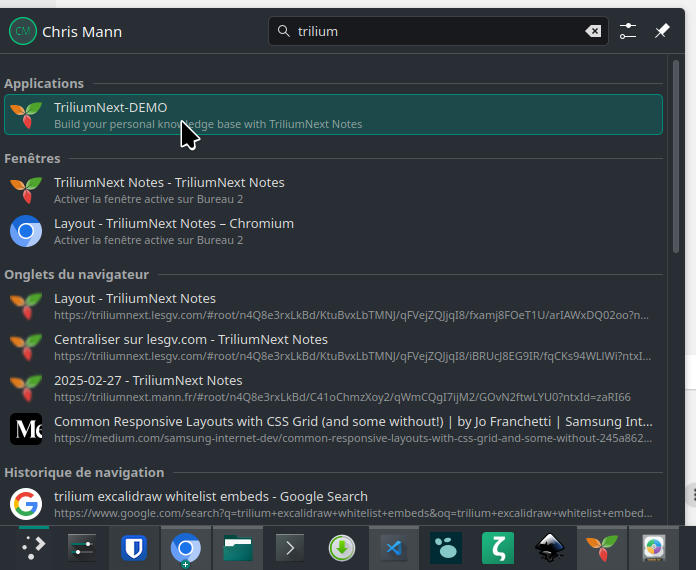
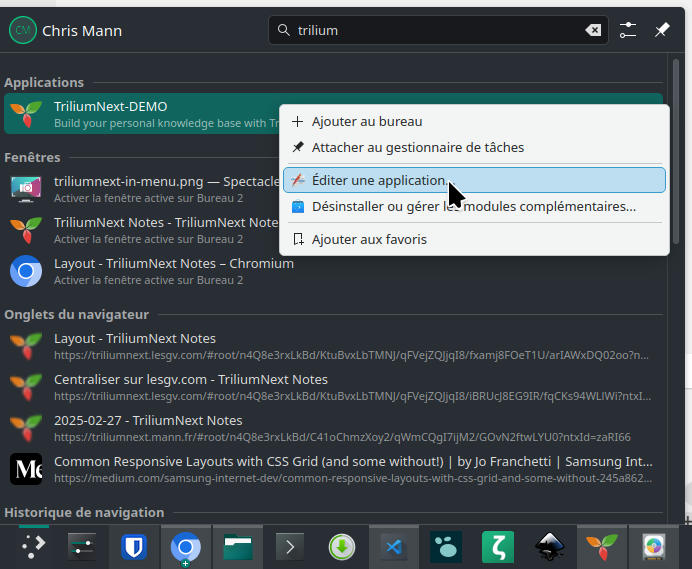
Dans la fenêtre de l'application, je me permets de copier/coller le raccourci. Sur le deuxième raccourci, d'ajouter un variable d'environnement TRILIUM_DATA_DIR dont la valeur par défault est /home/<username>/.local/share/trilium-data et je renseigne la valeur suivante : TRILIUM_DATA_DIR=/home/<username>/.local/share/trilium-data-<instancename>. Ceci permet une instance indépendante.
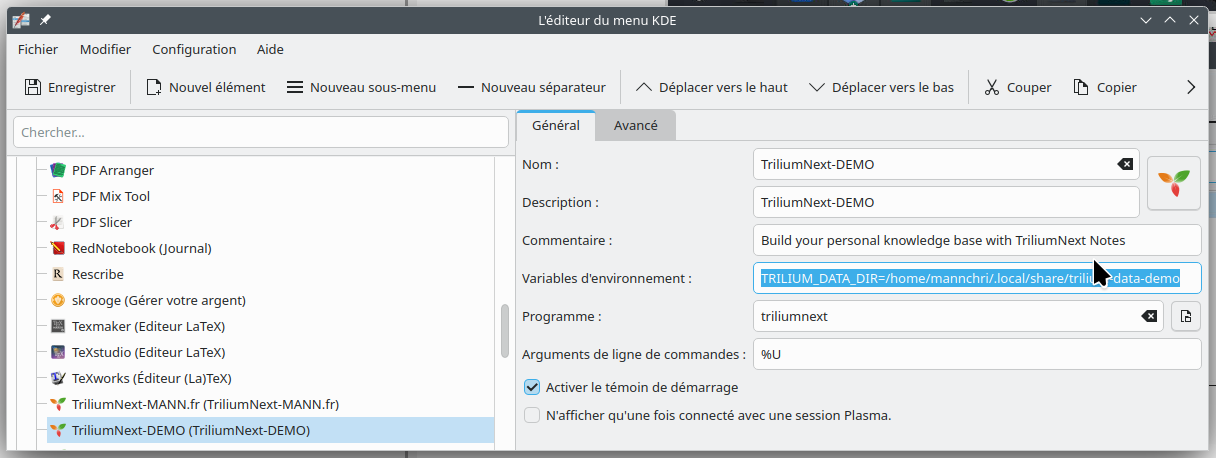
¶ Multiple instances en même temps
Je suppose que je ne peux pas avoir plusieurs instances car ils doivent occuper le même port. Pour changer le port, il s'agit d'ajouter un variable d'environnement (séparé par une espace). TRILIUM_PORT=<Un port unique comme "38080"> TRILIUM_DATA_DIR=/home/<username>/.local/share/trilium-data-<instancename>
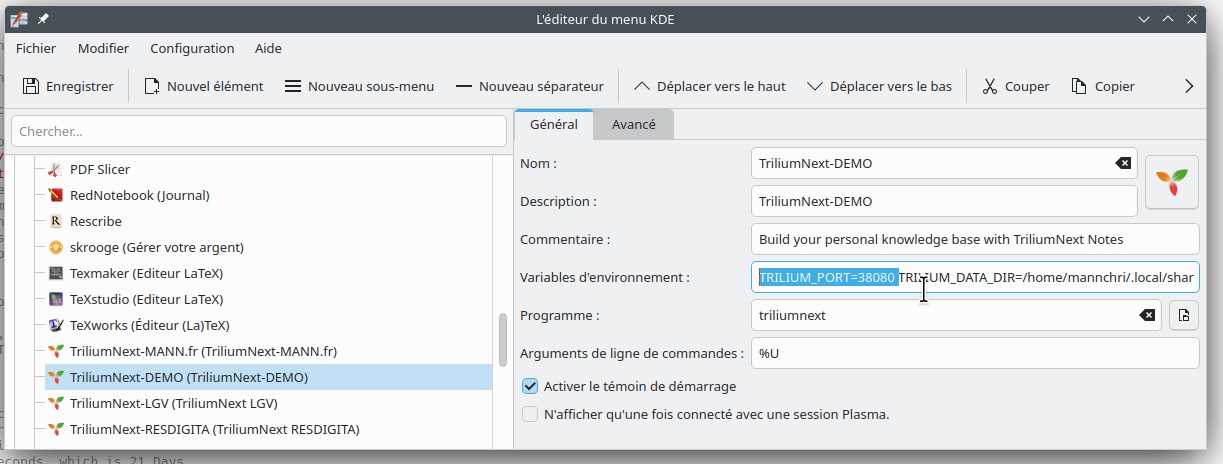
¶ Installation sur un Mac
https://github.com/TriliumNext/Docs/blob/main/Wiki/data-directory.md
¶ Dèsinstallation de Manjaro
Pour dèsinstaller:
- Supprimer le dossier de données
/home/<username>/.local/share/trilium-data-<instancename> - Après un clique droit sur le raccourci, vous pouvez le supprimer depuis le menu "modifier" puis "supprimer".
- il est aussi possible de désinstaller
triliumnext-bin

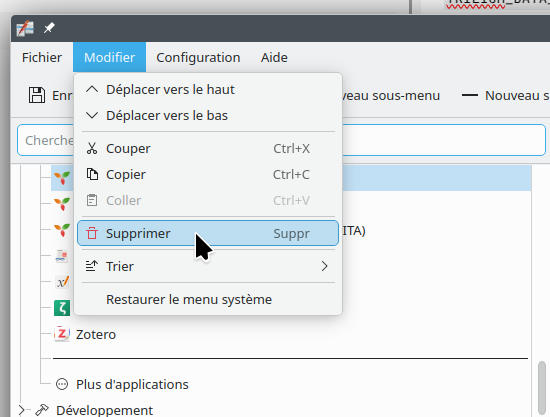
...
¶ Certificat auto-signé sur Manjaro
Instructions pour générer un certificat suivies viennent d'ici dont ci-dessous les lignes de command.
cd
mkdir -p .ssh
cd .ssh
openssl genrsa -out trilium.key 2048
openssl req -new -key trilium -out trilium.csr
openssl x509 -req -days 3650 -in trilium.csr -signkey trilium.key -out trilium.crt
Ensuite, on modifie /home/<username>/.local/share/trilium-data-<instancename>/config.ini comme suite.
[General]
# Instance name can be used to distinguish between different instances using backend api.getInstanceName()
instanceName=LesGV
# set to true to allow using Trilium without authentication (makes sense for server build only, desktop build doesn't need password)
noAuthentication=false
# set to true to disable backups (e.g. because of limited space on server)
noBackup=false
[Network]
# host setting is relevant only for web deployments - set the host on which the server will listen
# host=0.0.0.0
# port setting is relevant only for web deployments, desktop builds run on a fixed port (changeable with TRILIUM_PORT environment variable)
port=8081
# true for TLS/SSL/HTTPS (secure), false for HTTP (insecure).
https=true
# path to certificate (run "bash bin/generate-cert.sh" to generate self-signed certificate). Relevant only if https=true
certPath=~/.ssh/trilium.crt
keyPath=~/.ssh/trilium.key
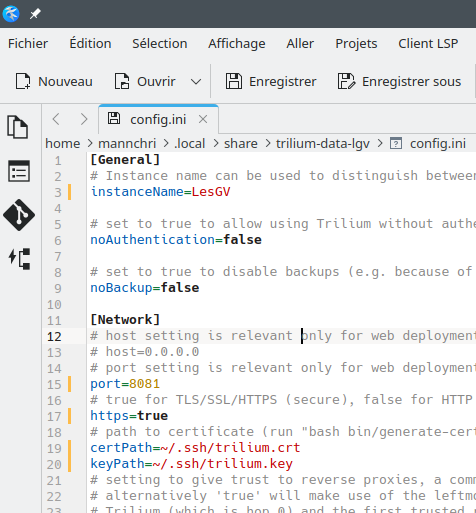
And add NODE_TLS_REJECT_UNAUTHORIZED=0 to the environmental variables in the shortcut as follows.
